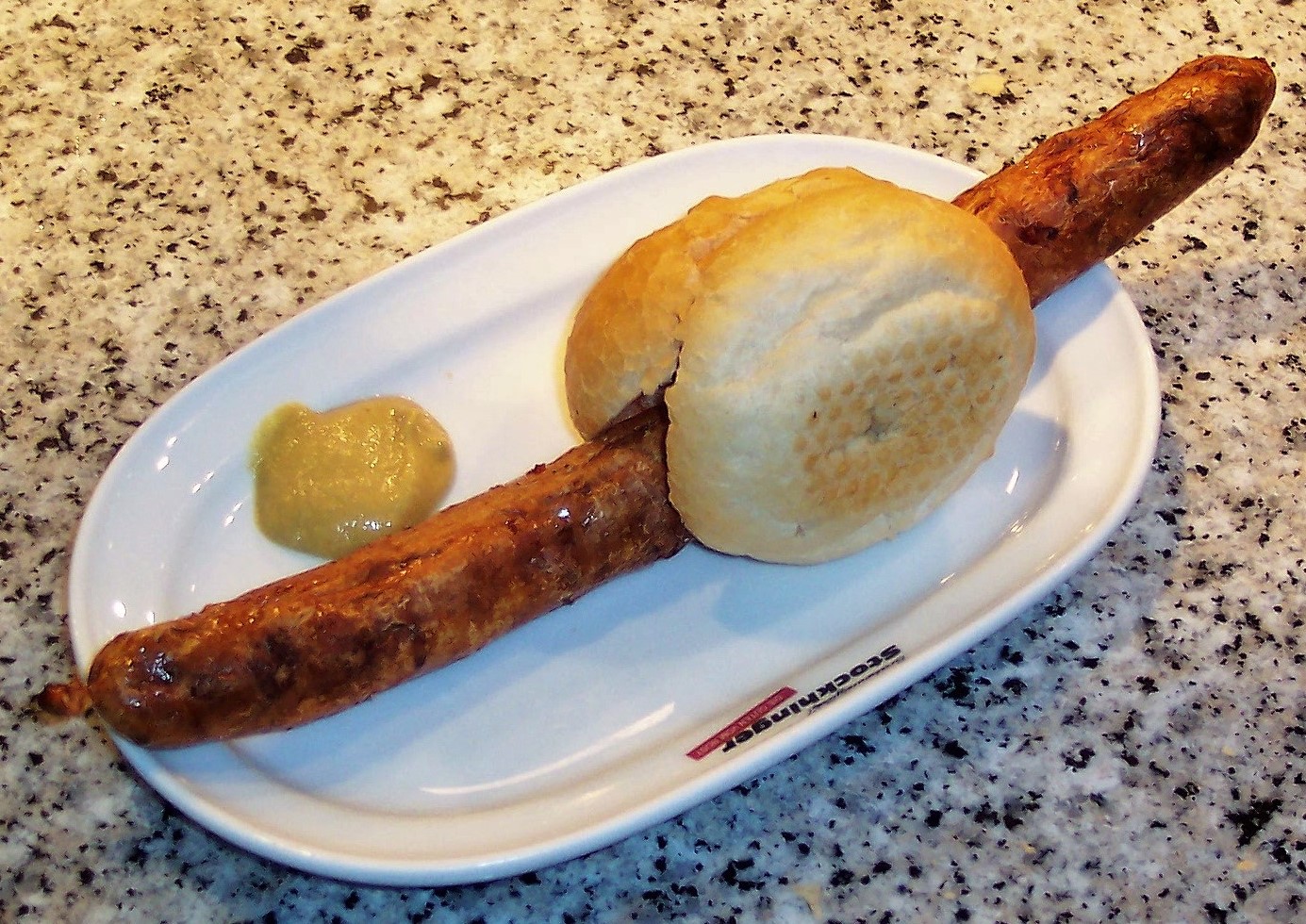
Anyone who talks about Franconia cannot ignore the Franconian bratwurst, it is unique in Germany. Just like there are different dialects in. this region, there are variances of recipes for this Bratwurst
Franconian bratwurst is fried in a pan, or on the grill, sometimes smoked. The recipe consist of pork shoulder, plenty of marjoram (protects against rheumatism and evil spirits), black pepper, salt and a tiny pinch of nutmeg. The whole thing also tastes excellent as “Mett” or raw meat with onions on bread.
The Coburger Bratwurst is the largest with at least 31 cm. It’s a coarse kind, and usually roasted over the open pine cone fire, which gives it the special flavor. It is also the only one that is eaten as a single entity on a small bun, but all the other variants in Upper Franconian are in pairs or more.

The Bratwurst in the Forchheim area is equally coarse, but smaller. They are medium in size in the town of Bamberg, Lichtenfels and Kronach. A specialty in Kronach are the G’strüpften, these are cut, skinned and baked, not fried

The areas around Hof, Bayreuth and Kulmbach have fine sausages, and they are rather long and thin. There is 20% to 25% beer alcohol content in the Pegnitzer Bratwurst!
The areas around Hof, Bayreuth and Kulmbach have fine sausages, and they are rather long and thin. There is 20% to 25% beer alcohol content in the Pegnitzer Bratwurst!

The Hofer Bratwurst is made from lean pork and some beef. They are very fine with a diameter of 18-22 mm long.

Bratwurst stands as seen on Festivals or the Marktplatz

In medieval Sulzfeld (near Kitzingen) there is even a meter of bratwurst, the longest!
The place known for the Meter-Bratwurst, is offered in five guest houses. It can be found in the “Ratsstube”, “Michels-Keller”, “Zum Hirschen”, “Zum goldenen Löwen” and in the “Zum Stern” guest house. It tastes a bit different everywhere, everyone prepares them to their own recipe. One would have to try themselves to find their favorite.

The Old Mill Bratwurst in the South of Franconia has the coarsest texture and is distinguishable from most other bratwursts. It is about 10 to 12 inches long and weighs about 80 to 100 grams

Kulmbacher Bratwursts are very similar like the Hofer in appearance, but are produced with a high veal content. You are served at the Bratwurst stand with plenty of anise. You either order two in half or three in total.


Nürnberger Bratwurst are the shortest with a length of 7 to 9 cm. It is typically eaten in dozens (12) or half dozen (6). It is the smallest of of the bratwurst and has the “Three in Weggla” or 3 in a roll


Würzburger Bratwurst, also called Winzerbratwurst, contains a shot of Frankonian white wine. At the Bratwurst stand you get them usually at the Würzburger Marktplatz. This Bratwurst is called and referred to as the “Geknickte”(kinked).
Another specialty from Franconian cuisine comes from the saucepan, “Blaue Zipfel” or Blaugesottene. The Bratwursts are cooked slowly in a vinegar stock, which is made of juniper, bay leaf, fresh leek, celery, carrots and, of course, lots of onions, seasoned with salt and sugar. Served with Bauernbrot or Pretzel, sometimes freshly grated horseradish and Franconian beer or wine, that’s all you need
This variant of Bratwurst, which the raw brats are boiled in a vinegar broth with onions. It’s called Blaue Zipfel or Blaugsottene.

There is no reliable information about the origin of “Blaue Zipfel”. Original recipes for the Franconian Bratwurst go back to the 16th century, and mentions even go back to the 13th century. There are many anecdotes about the origin of the name “Zipfel” because of its small size. Back in the middle ages it was the fact that the population should be supplied with meat in times of famine, war or epidemic. A sausage regulation therefore reduced the sausage weight from 115 to 25 grams.
Watch a little video about Franconian Bratwurst here
